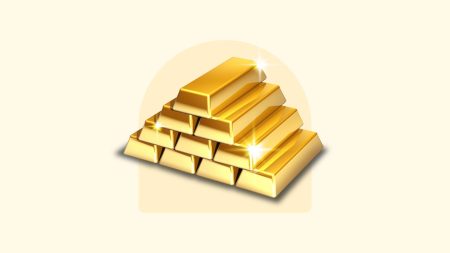An option can be either in the money, out of the money or (very rarely) at the money. These three different statuses for options indicate the relationship of the option’s strike price and the price of the underlying stock (or other deliverable). This status — called “moneyness” — can change over time as the price of the stock moves above and below the option’s strike price.
Here’s what in-the-money and out-of-the-money options are and how they differ.
When is an option in the money?
An option is in the money (ITM) if the option would be worth something if it expired at that moment. Being in the money depends on the type of option:
- For call options, an option is in the money if the stock price is above the strike price.
- For put options, an option is in the money if the stock price is below the strike price.
The status of being in the money does not depend on the position of the options trader and whether they’re long or short a specific contract. That is, an option is in the money regardless of whether the trader owns the option or has sold it.
Importantly, the status of being in the money does not indicate whether the option trade is profitable or not for the trader. A trader can buy or sell ITM options and make or lose money on them, even while they’re still in the money.
An option’s status may shift from in the money to out of the money if the price of the underlying stock changes. For example, for a call option, if the stock price falls below the strike price, the call becomes out of the money after briefly being an at-the-money option.
The status of options that are “deep in the money” (or “deep out of the money”) may never change, depending on how the underlying stock performs.
The best brokers for options trading can help traders quickly determine through a well-designed options chain which options are in the money and which are out of the money.
Benefits and disadvantages of in-the-money options
Benefits of ITM options
- Lower volatility: ITM options become less volatile, since more of their price is due to the option having intrinsic value and less to time value. The more in the money, the lower the volatility, ell else equal. Of course, lower volatility may be less attractive for some traders.
- Larger premium: An ITM option has a larger premium, which may be attractive for investors looking to sell the option, especially if they aim to buy it back for less later.
- Lower probability of total loss: An option that’s more in the money is generally more likely to retain some value at expiration, all else equal.
Disadvantages of ITM options
- Greater potential loss: Buying an ITM option requires more money, all else equal, so the trader has more money on the line in an option that could expire worthless. While the potential loss is greater with an ITM option, it has a lower likelihood of happening.
- Lower percentage upside: An ITM option tends to become less volatile as it becomes deeper in the money, meaning it’s less sensitive to moves in the stock price. In other words, the stock has to move more to get the same favorable price change in the option.
- Costlier: An ITM option costs more, so the trader can afford fewer contracts. The deeper in the money, the fewer contracts can be purchased with the same amount of money.
Examples of in-the-money options
Imagine Stock X, which is priced at $21 a share. Call options with a strike price of $20 that expire in four months cost $2.
This specific $20 call option is in the money, because the stock price is above the option’s strike price. Call options with strike prices at $17.50, $15 and lower are also in the money.
In contrast, call options at strike prices of $22.50, $25, $27.50 and so on are out of the money.
To take another example, imagine Stock Y, which is priced at $19 a share. Put options with a strike price of $20 that expire in four months cost $2.
This specific $20 put option is in the money, because the stock price is below the option’s strike price. Put options with strike prices at $22.50, $25 and higher are also in the money.
In contrast, put options at $17.50, $15, $12.50 and so on are out of the money.
When is an option out of the money?
An option is out of the money (OTM) if the option would be worth nothing if it expired at that moment. Being out of the money depends of the type of option:
- For call options, an option is out of the money if the stock price is below the strike price.
- For put options, an option is out of the money if the stock price is above the strike price.
Just as for in-the-money options, the status of being out of the money does not depend on the position of the options trader and whether they’re long or short a specific contract. That is, an option is out of the money regardless of whether the trader owns the option or has sold it.
Similarly, the status of being out of the money does not indicate that the option trade is profitable or not for the trader. A trader can buy or sell OTM options and make or lose money on them, even while they’re still out of the money.
An option’s status may shift from out of the money to in the money if the price of the underlying stock changes. For example, for a call option, if the stock price rises above the strike price, the call becomes in the money after briefly being an at-the-money option.
The status of options that are “deep out of the money” (or “deep in the money”) may never change, depending on how the underlying stock performs.
Benefits and disadvantages of out-of-the-money options
Benefits of OTM options
- Lower cost: OTM options cost less because the premium has no intrinsic value baked into the price.
- Higher total potential gains: The lower cost of OTM options means that a trader can generate higher total gains for a given amount of capital if the trade is successful. The low cost and high potential gains are part of the appeal of zero-day options trading.
- Greater volatility: OTM options may have greater volatility because their price is not tied to intrinsic value but rather only time value, which is constantly decaying. So a successful trade may generate big gains quickly, especially if an OTM option becomes in the money.
Disadvantages of OTM options
- Greater volatility: Higher volatility cuts both ways, and OTM options tend to be more volatile than ITM options.
- Illiquid: Calls that are far out of the money can be difficult or impossible to sell. The option may have to be held until expiration, when it will be removed from your portfolio.
- Greater probability of loss: If the underlying stock does not move, the OTM option will expire worthless, and the value of the OTM is all time value, which decays every day.
Examples of out-of-the-money options
Imagine Stock X, which is priced at $19 a share. Call options with a strike price of $20 that expire in four months cost $1.
This specific $20 call option is out of the money, because the stock price is below the option’s strike price. Call options at $22.50, $25, $27.50 and so on are also out of the money.
In contrast, call options with strike prices at $17.50, $15 and lower are in the money.
To take another example, imagine Stock Y, which is priced at $21 a share. Put options with a strike price of $20 that expire in four months cost $1.
This specific $20 put option is out of the money, because the stock price is above the option’s strike price. Put options with strike prices at $17.50, $15, $12.50 and so on are out of the money.
In contrast, put options at $22.50, $25 and higher are in the money.
When is an option at the money?
An option is at the money (ATM) at only one exact point in its life — when the stock price is exactly at the option’s strike price. At this rare moment, an option will likely soon become an in-the-money or out-of-the-money option, depending on the next price the stock trades at.
If an option closes expiration at the money, it typically expires worthless, though a trader may decide to exercise the contract nonetheless.
Key differences between in-the-money and out-of-the-money options
- Volatility: ITM options are less volatile than OTM options, because some of their price is tied to intrinsic value.
- Intrinsic value: ITM options have some intrinsic value, while OTM options have no intrinsic value. An option’s intrinsic value is the option’s value if the option expired today.
- Time value: ITM options may have some time value, but OTM options are entirely time value. Time value is the part of an option’s value that isn’t intrinsic value.
- Premium: The options premium is larger for an ITM option at the same strike than if the same option were out of the money, all else equal.
- Probability of total loss: ITM options have a lower probability of a total loss compared to OTM options, all else equal.
Bottom line
Whether an option is in the money or out of the money depends entirely on the relative positions of a specific option’s strike price and the price of the underlying stock. Options routinely bounce between either status, depending on how the stock performs and particularly how volatile it is.
Read the full article here










